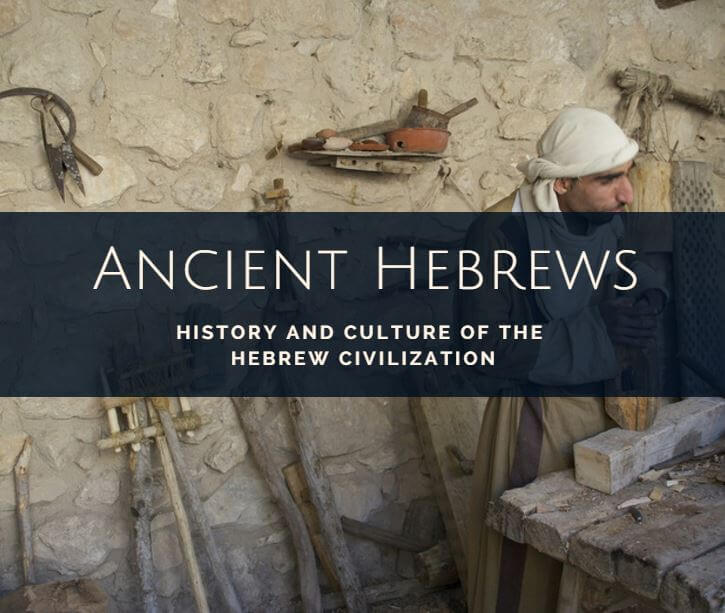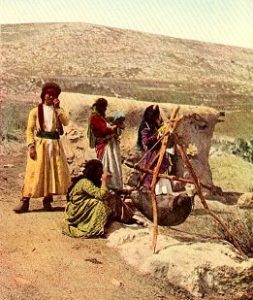The Hebrews were natives of Mesopotamia. They were nomads, and lived in tents, herding flocks of goats and sheep, using donkeys, mules, and camels as beasts of burden. An economic crisis could have influenced Terah, father of Abraham, to leave his city to go to the city of Harran, in the Upper Euphrates. From there, some of them emigrated towards Canaan, promised by God to the descendants of the patriarch Abraham. Several tablets discovered in Mari certify that there were frequent migrations in these regions.
The Ancient Hebrew Civilization
Contents
Location and Geographical Site
Coming from the Middle East, the Hebrews installed themselves in Palestine, directly to the south of Phoenicia. In other words, between the Mediterranean Sea, the river Jordan, the Dead Sea, the mountains of Lebanon and the Sinai Peninsula.

Their placement, in a territory which is not very fertile, presents plains apt for shepherding and cultivation (principal activities), which is a characteristic desired by their neighbors in the desert.
Origin of the Civilization
The Hebrews were born in Mesopotamia, specifically of Abraham and his clan, who settled themselves in Palestine. Originally, this place was called Canaan, with its respective inhabitants called Canaanites. Many years later, a tribe of Aryan origins called the Philistines arrive, naming the area Philistia (the origin of “Palestine”). Finally the Hebrews arrive, who did not have great relevance, but still remain current, above all their religion.
History of the Hebrew People: Chronology: 2000 B.C. to 70 A.D.
It begins with the arrival of the first inhabitants at the shore of the river Jordan and lasts until the destruction of Jerusalem by the emperor Titus.
Phases of its history
1. Patriarchs
This is the name used in the time in which the tribes were governed by the elders, called patriarchs.
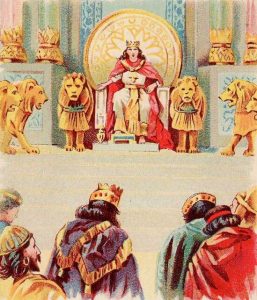
– The period is also called the time of the pilgrimage in the desert (Exodus)
– The elders govern, as wisdom was gained by experience
a) Abraham
He was the first of the patriarchs. He was born in the city of Ur, in Mesopotamia. The Bible relates that at 75 years old this patriarch heard the voice of God, which told him to leave the land of Ur. Historians state that the said event occurred during the reign of Hammurabi, around the year 2050 B.C.
He begins the pilgrimage and the search for the Promised Land, directing himself, with his people, towards the desert, where Jehovah, as a reward for his obedience, promises him the land of Canaan.
The sons he had with his wife Sara, Isaac, and her slave Hagar, Ishmael, are the origin of many conflicts in the Middle East, as these sons would give rise to the Jews and the Arabs, respectively.
b) Jacob
He was the son of Isaac and grandson of Abraham, also known as Israel, which means, “He who wrestles with God.” He married in Chaldea and returned to Palestine. He had 12 sons, who were the founders of the twelve tribes of Israel.
c) Moses
His name means, “Saved from the waters.” He liberated his people from Egyptian oppression by means of the Exodus. He received the Ten Commandments at Mount Sinai. His people were punished for 40 years for idolatry. He came almost to the Promised Land (Palestine) and left the people under the charge of Joshua, who did arrive to said land.
History of the Patriarchs
Through their departure from the city of Ur, Mesopotamia, this people traveled towards Palestine (the thin strip of land between Phoenicia, modern-day Lebanon, and Egypt). The Hebrews divided themselves into tribes, thus forming patriarchal clans which worshiped only one God (monotheism), accrediting themselves as His chosen people, and because of this God would choose certain members of the group in order that the divine plans should be fulfilled. The clans were governed by a Patriarch, and practiced an economy based on shepherding, which evolved towards agriculture thanks to the fertility of the northern lands and to the mountainous zones of the South of Palestine.
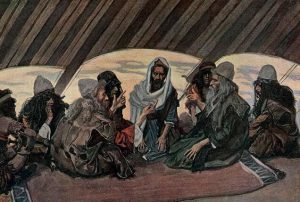
The Hebrews remained for around three centuries in Palestine, until the occurrence of a severe drought which gripped the region. Some tribes, under the leadership of Jacob, migrated toward Egypt and settled there for four hundred years, a period which coincides with the domination of Egypt by the Hyksos, who cooperated with the Hebrews. When the Hyksos were expelled the Hebrews began to suffer persecutions, they were condemned to paying high taxes and were later made into slaves. This oppression ended with the rise of Moses who led the Hebrew people towards liberty on the way to Canaan (called the “Promised Land”). This episode was known as the Exodus, and was portrayed in the book of the Bible with the same name. Moses, according to the Bible, received from Jehovah, at Mount Sinai, the Ten Commandments, which contain ethical, moral, and religious principles which were to guide the conduct of the Hebrew people and, principally, reinforce the belief in only one God. Moses and the Hebrew people remained in the desert of Sinai for forty years. The difficulties encountered on the way to return to the Promised Land were accompanied, on several occasions, with returns to idolatry and polytheism, obligating Moses to reinforce his authority more each time. Meanwhile, Moses would die before the arrival to Palestine.
The Successor of Moses would be Joshua, who would just conclude the long journey towards Palestine. On arrival, they would see that the Promised Land was occupied by other peoples like the Canaanites and Philistines. It would be necessary to fight to conquer Canaan. As the Patriarchs were religious leaders and not soldiers they would give place to the Judges, military chiefs who would come to command the Hebrews in the struggle for the “Promised Land.”
2. Judges
The period in which the Hebrews establish themselves definitively in Palestine, abandon the nomad life and divide themselves into twelve tribes, who named the Judges as their government. In this second period of Hebrew history, this people fights for consolidation in the Promised Land where they were to settle permanently. The most celebrated judges were: Gideon, Jephthah, Samson and Samuel.
a) Gideon:
He is the fifth Judge who appears in the book of the Bible called “Judges” (Chapters 6 through 8). He is also mentioned in the epistle to the Hebrews as an example of a man of faith. He was a son of the tribe of Manasseh. The name Gideon means “Destroyer” or “powerful warrior.” Gideon was the judge who liberated the sons of Israel from the Midianites. The Midianites were nomadic Arabic peoples from the deserts of Syria and Arabia. These people oppressed the Hebrews, stealing their crops and domestic animals from them. They had invaded the central part of Palestine. It was then that Gideon was called by God to liberate his people. God ordered him to destroy the altar of Baal (false god in Asia Minor, some Hebrews had fallen into idolatry of this god) and to raise an altar dedicated to God. After defeating the Midianites, he was considered a military hero, and Israel wished to make him king, but surprisingly Gideon turned down this offer; all he wanted were the gold earrings which had been taken as part of the spoil of war to honor the altar of Yahweh (Judges 8:27). The service provided by Gideon was a very important step in the history of Israel, before monarchy. Gideon was an example of a humble and faithful servant of God.
b) Samson
From the tribe of Dan, which represented relentless defense against the Philistines. He was the possessor of an extraordinary strength linked to his long hair and whose secret was revealed by the disloyal Delilah. The Bible mentions that with the jawbone of a donkey he killed a thousand Philistines.
c) Samuel
Last of the judges at the end of the 6th Century B.C., defeated the Philistines, but whose prestige lies in the spiritual and religious influence he had. He tenaciously combated idolatry and unified the Hebrews who decided to recognize an authority common to all, thus forming one monarchical state whose first king was Saul.
3. Kings
Period in which the Hebrews were governed by a King, arose because of the need to unify and defend themselves against their enemies, the Philistines on the coast and the nomads of the desert.
History of the period of the Kings

Later on, to further unite the people and centralize the religious, political, and military powers, the monarchy was founded. Saul would be the first Hebrew king, but would kill himself after a humiliating defeat, and David would succeed him, who had killed the giant Goliath with a stone. In the year 966 B.C., David would die and in his place Solomon would be crowned. At these times the Hebrews already had a great army and a centralized administration and government. All this favored king Solomon, but excessive spending in the royal court would oblige him to raise taxes, thus causing discontent in the population. On the death of Solomon the division of the monarchy into two kingdoms (schism) would occur: The Kingdom of Israel in the north with its capital in Samaria, made up of ten tribes; and the Kingdom of Judah in the south, made up of two tribes, and with Jerusalem as its capital. In the year 721 B.C., the Kingdom of Israel would be conquered by the Assyrians and approximately two hundred years later the Kingdom of Judah was conquered by the Babylonians at the command of king Nebuchadnezzar II, and in this way the Hebrews would return to being enslaved; this period is known as the Babylonian Captivity.
As a result if this division in two Kingdoms, downfall ensued, being dominated by the Assyrians under Shalmaneser V and Sargon II; later by the Persians under Cyrus the Great; the Greeks under Alexander the Great, and, finally, by the Romans when Palestine became a Roman province in the time of Pompey.
a) Saul (1117 B.C.)
He was named king at the request of the people. He had a magnificent army, which permitted the Hebrews to live in peace and secure their borders. He became a brilliant warrior, fighting against the Philistines.
b) David (1077 B.C.)
He permanently subdued the Philistines upon defeating the giant Goliath. He extended his dominions from the Red Sea to the Euphrates, constructed the capital of the kingdom, which was Jerusalem, considering himself the true founder of the Hebrew kingdom (Israel).
c) Solomon ( 1037 B.C.)
Characterized by his wisdom; under his rule great prosperity was achieved owing to the increase in commerce between the Nile and Mesopotamia, Palestine being the necessary step for merchants who traveled towards these two regions. He constructed the great Jerusalem Temple; he did not fight wars and he passed his life in complete peace, living in his large and sumptuous palace, in which he would once receive the exotic Queen Sheba, of Arabia, and in which, thanks to the reigning tranquility, he would write three famous integral books of the Bible: “The Song of Songs,” “Proverbs” and “Ecclesiastes.”
d) Jeroboam (931 B.C.)
With Solomon dead, his son Rehoboam should have succeeded him, but ten of the twelve tribes chose Jeroboam, who founded the kingdom of Israel. In contrast, the two remaining tribes, the tribes of Benjamin and of Judah, formed the kingdom of Judah. This schism or separation was only of a political character and not religious, given that both kingdoms followed that which was imposed by Jehovah or Yahweh.
Cultural Customs in the Ancient Hebrew Civilization
They valued music and employed it in religious ceremonies. The shofar was a typical Hebrew instrument, the horn of a ram used to convene ritual ceremonies. They also used zithers, timbrels (tambourines) and flutes to mention only the most popular. There were no paintings nor sculptures for fear that they would fall into idolatry. The Bible mentions music, dance, and poetry, being three disciplines which are intimately related and which were used in worship, as a demonstration of joy and in order to honor the Creator. In the time of king David, music and dancing, athletic and free, were under the charge of the religious. Dancing was later excluded, but music and hymns remained a part of the ceremonies.

The Hebrews dedicated themselves to agriculture and raising livestock. The characteristic crops were olives and grapevines, and they also obtained legumes and lentils. The shepherding of sheep, oxen, goats, horses and camels accompanied their agricultural activity. They also worked in ceramics and made numerous textiles of wool and linen.
Their characteristic dress was a tunic which reached the feet, made with fringes which according to the Bible served to remind them of the religious commandments.
In addition, they stood out in music, Samuel being the creator of a school of music. They used as their musical instruments trumpets, flutes, tambourines, harps, and the horns of animals.
The Bible mentions music, dance, and poetry, which are three intimately related disciplines and which were used in worship, as a demonstration of joy and to honor the Creator. In the time of king David, music and dance, athletic and free, were under the charge of the religious. Dance would later be excluded, but music and hymns remained a part of the ceremonies.
Achievements and Contributions to Humanity
The contribution to humanity which stands out most is their religion, as it dominated all aspects of the Hebrew culture. The prohibition of representing the divinity stimulated literature and the result was the Bible, also denominated the Holy Scriptures. The Old Testament is written for the Hebrews. It speaks of the customs and moral thoughts of the Israelites. Later the Christians added the New Testament with the arrival of Christ and the origins of Christianity. The first great difference in the religion of the Hebrew people from the rest of the Near East is believing in only one God. This God is just and good and demands from his people the fulfillment of a certain morality. He does not have a human form, which means that he cannot be represented. Man is inferior to Him, as God made him in his image, immortal, but as he has sinned he must be punished.
Social Organization
Patriarchy
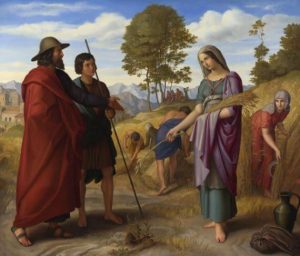
The nucleus of the Hebrew society was the patriarchal family, in which the father was the highest authority. In the beginning, the Hebrews lived in family groups or clans directed by the oldest, the patriarch, who administered justice, directed war and religious rites.
The Monarchy
Saul, a good warrior to face their enemies, was the first Hebrew king. In the year 1000 B.C. David was chosen as Saul’s successor. The new king faced their enemies, conquered Jerusalem and made it into the capital of the State.
Political Organization
They were divided into tribes, without forming one state; when they were attacked they would eventually accept one chief, called a Judge, who was generally a military leader. This Judge would unite various tribes under his authority. The death of Solomon unleashed a rivalry among the twelve tribes which ended in the division of the kingdom into two different states:
a) the ten tribes of the north made up the Kingdom of Israel, larger and stronger, with its capital in Samaria.
b) the two tribes of the south made up the Kingdom of Judah, with its capital in Jerusalem. As a consequence of this division there was an economic and religious decline.
Art in the Ancient Hebrew Civilization
The majority of literary works were compiled and organized during the period of the peak of the monarchy and by order of the king. The Psalms, Proverbs, nuptial songs of the Song of Songs, the Chronicles, Genesis, Exodus, Judges, the Kings and other books denominated the Books of Wisdom, like Ecclesiastes, deserve special mention. They valued music and employed it in their religious ceremonies. The shofar was a typical Hebrew instrument, the horn of a ram used to convene ritual ceremonies. They also used zithers, timbrels (tambourines) and flutes, to mention the most popular. There were no paintings nor sculptures for fear that they would fall into idolatry and in addition because it was prohibited as their God could not be represented and whatever human form or anything similar could be taken as attempting to represent their God. Their architecture stood out, within it the palaces, the homes of the nobles and the temples.
Economy and activities
The Hebrews, established in Palestine, dedicated themselves to agriculture and raising livestock. The characteristic crops were olives and grapevines, and they also obtained legumes and lentils. The shepherding of sheep, oxen, goats, horses, and camels accompanied their agricultural activity. They also worked in ceramics and made numerous textiles of wool and linen; the most important of their economic activities was commerce. This was owing to the fact that their place of settlement, Palestine, was a bridge country, that is to say, a place of transit by merchants between Mesopotamia and Egypt: they exported oil and wine and imported metals, ivory, and spices.
Society
The Israelite society was intimately related to their religion. The nucleus of the Hebrew society is the family, which is patriarchal. The father is the highest authority. Slaves also existed; they were obtained by buying them or as prisoners of war. In their time as nomads, the Hebrews lived in tents with little furniture. This way of life facilitated their movement in search of pastures for their flocks. After settling in Palestine, they lived in houses made of stone, surrounded by gardens, forming settlements.
Religion of the Hebrews:
Monotheistic religion (belief in only one God: Yahweh or Jehovah): The Hebrew people had the conviction of believing in only one universal God, Jehovah, creator of all things. This was the product of a long religious evolution, crystallized by Moses, who vigorously imposed monotheism during the 40 years of life wandering through the desert, after the exodus.
1. The Decalogue:
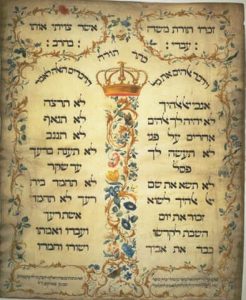
Comprised of the Ten Commandments which Jehovah gave to Moses on Mount Sinai
2. Religious festivals:
- a. Feast of the Passover: Commemorating the flight from Egypt
- b. Feast of Pentecost: Record of the reception of the commandments of God’s Law
- c. Feast of tabernacles: Record of the nomad life in the desert
3. The Prophets
They were independent men because of their origin in the priestly caste; they publicly criticized actions which they judged contrary to the Hebrew beliefs. They acted between the era of the Schism and the Babylonian Captivity. The most distinguished were: Amos, Jeremiah, Isaiah, Ezekiel, etc.
4. The Bible (1657 B.C.)
Comprised of two parts:
The Old Testament deals with the Hebrew history, customs and traditions.
- The Pentateuch is comprised of the first five books of the Bible:
- Genesis (covers the creation of the world, the great flood, and the period of the patriarchs)
- Exodus (Moses and the reception of the Ten Commandments)
- Leviticus (worship, civil and penal law of the Hebrews)
- Numbers (march of the Hebrews from Sinai to the Jordan)
- Deuteronomy (Second Law: discourses of Moses “Mosaic Law”)
- The prophets: It is the second part of the Old Testament, made up of 21 books which relate meticulously the predictions of the prophets.
- The Hagiographies: It is the third part of the Old Testament, which integrates fifteen books of a religious, moral, or poetic character.
- The Talmud: It is the book written by the Jews, several centuries after the captivity, to affirm and conserve their beliefs, threatened by contact with foreigners. Written by the Jews in the 3rd Century A.D. who lived dispersed in all the cities of the Roman Empire: to conserve their beliefs, the Rabbis chose the traditional doctrines. The Talmud is comprised of:
- Mishnah (great written compilation of the Jewish oral tradition)
- Gemara (complement and conclusion of the first)
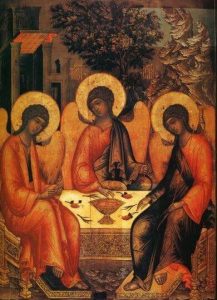
The Old Testament also includes historical and prophetic books, and books of wisdom. In total there are 21 books by sacred writers, of diverse value and of philosophical literary nature.
- New Testament: 27 books, deals with the life of Jesus, acts of the apostles, etc, consisting of:
- The Four Gospels (Saint Mark, Saint Luke, Saint Matthew, and Saint John)
- Acts of the Apostles
- Epistles of Saint Paul and Saint Peter
- The Revelation by Saint John
- Dispersion of the Jewish people
Dispersion of the Jewish people
1. Sects
The destruction of the kingdom of the Jews in the 6th Century B.C. generated distinct sects. Thus we have:
- Sadducees.- Supporters of the Roman customs: Wealthy class which denied the immortality of the soul.
- Pharisees.- of a certain nationalistic spirit, hopeful in the Messiah, and considered themselves the only interpreters of the Law.
- Essenes.- They formed small communities, where a severe morality ruled and the principles of Moses were applied to the letter of the law.
- Zealots.- They opposed the conquest of Palestine by the Romans. They advocated violence and the extermination of the invaders.
2. The Diaspora
In the year 70 A.D. the Roman emperor Titus seized Jerusalem: many Jews were sold as slaves and the rest were expelled from their country, dispersing throughout all the regions of the Roman Empire (Diaspora).
The State of Israel
In the present, the Jewish people, after having suffered domination at various times, finds itself established in part of the territory of Palestine, as a result of the effort realized by the Zionists, to obtain a territory. It arose after the Second World War, in 1948, as the State of Israel, with its capital in Jerusalem, contending with the opposition of the neighboring Arab states. From then on it has had a series of military conflicts with its neighbors the Arabs, like those of 1949, of 1956, and 1973 and, in the present, finds itself in conflict with the Palestinians who claim their land. In spite of this, Israel has achieved appreciable political, social, and economic development.

